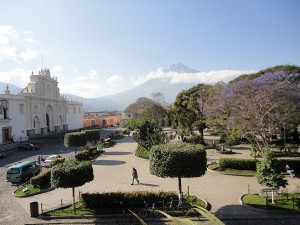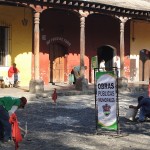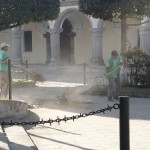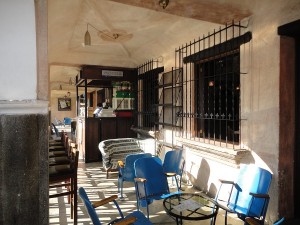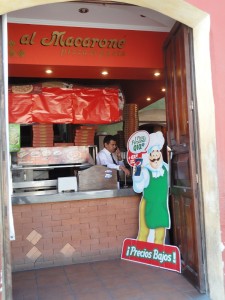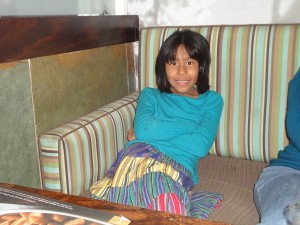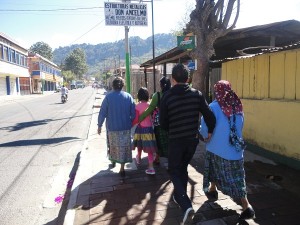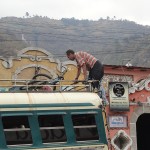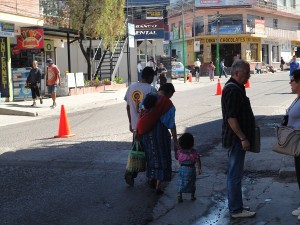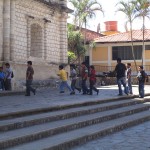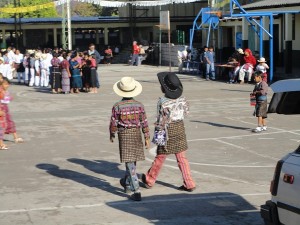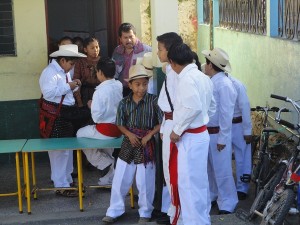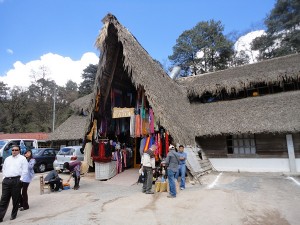On Wednesday after Spanish school, Patrice, Olivia, and I attended a folk dance performance by Niños con Bendicíon in nearby San Antonio Aguas Calientes. The dance troupe was founded and is led by Lesbi Chavez.
The children, ages 6 to 13 years old, dress in traditional outfits or traje from various parts of Guatemala. Each of the four dances they performed on Wednesday told a story from their Maya K’iche culture: Blessing of the Corn, Planting, The Corn God, and Dance of the K’iche King. The children accompanied themselves on traditional instruments, including marimba, drum, and flute.
Afterward, Lesbi demonstrated how to make tortillas, and we all got to try. As an absolute novice, I can tell you, it’s harder than it looks. Lesbi was very pleased to notice that Olivia, whose roots are Maya K’iche, was a natural at getting just the right ratio of water to pulverized corn paste. Above is a photo of our finished products, cooking on a traditional stove. Three guesses which tortillas were ours and which made by Lesbi.
The funds generated by the dance performances pay the school and living expenses of the children who participate in Niños con Bendicíon. For presentations, sponsorship, or more information, you may contact Lesbi Chavez (in Spanish) at Childrenwithblessing@gmail.com or Nancy Hoffman (in English) of Guatemala Reservations at Nancy@GuatemalaReservations.com. Learn more at http://www.supportlosninos.net/
Olivia, Patrice, and I, and the other members of our group, really enjoyed the afternoon we spent with Lesbi and the dancers. The next time you’re in Antigua, consider adding this outing to your itinerary.
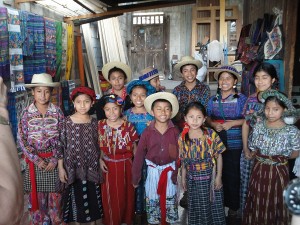

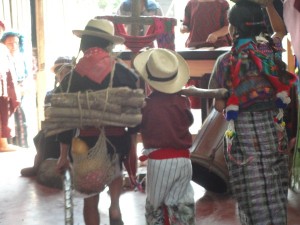
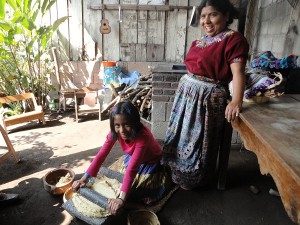
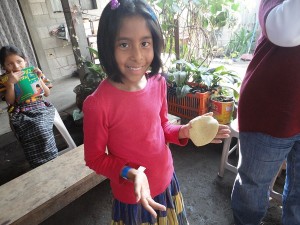
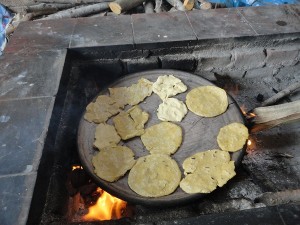
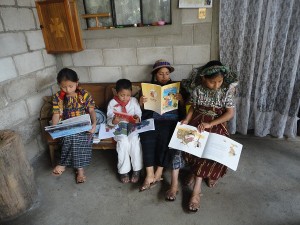



 ShareThis
ShareThis